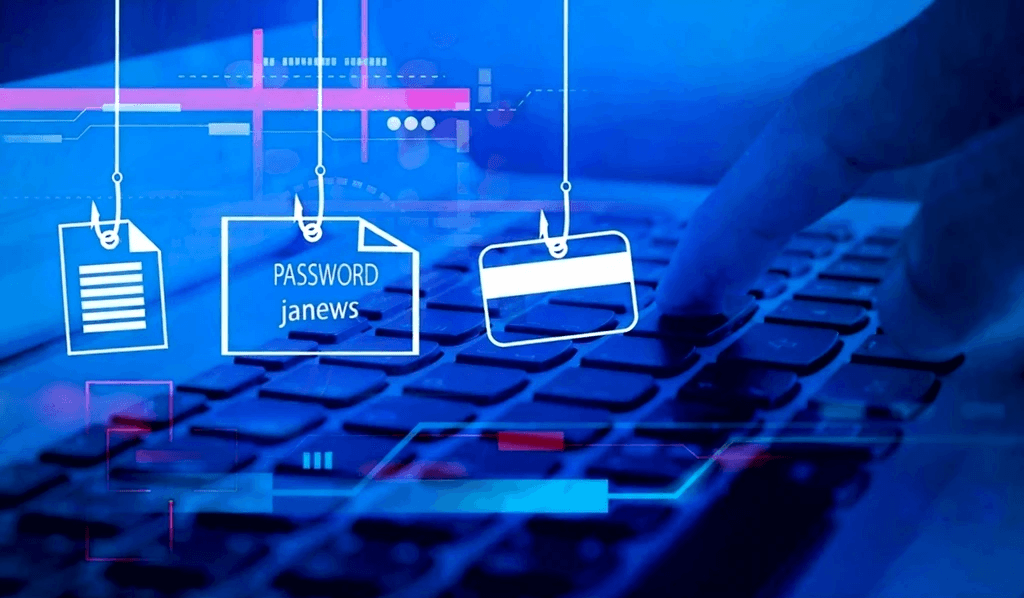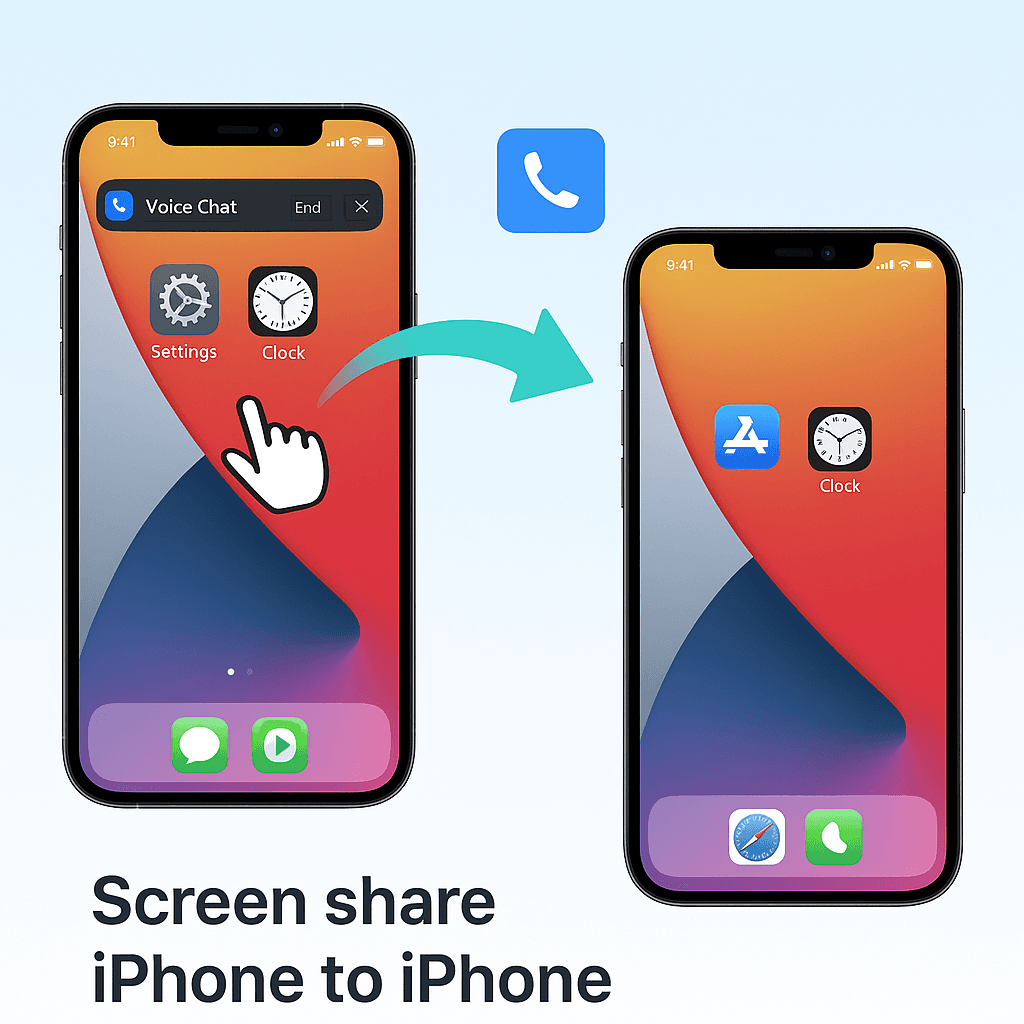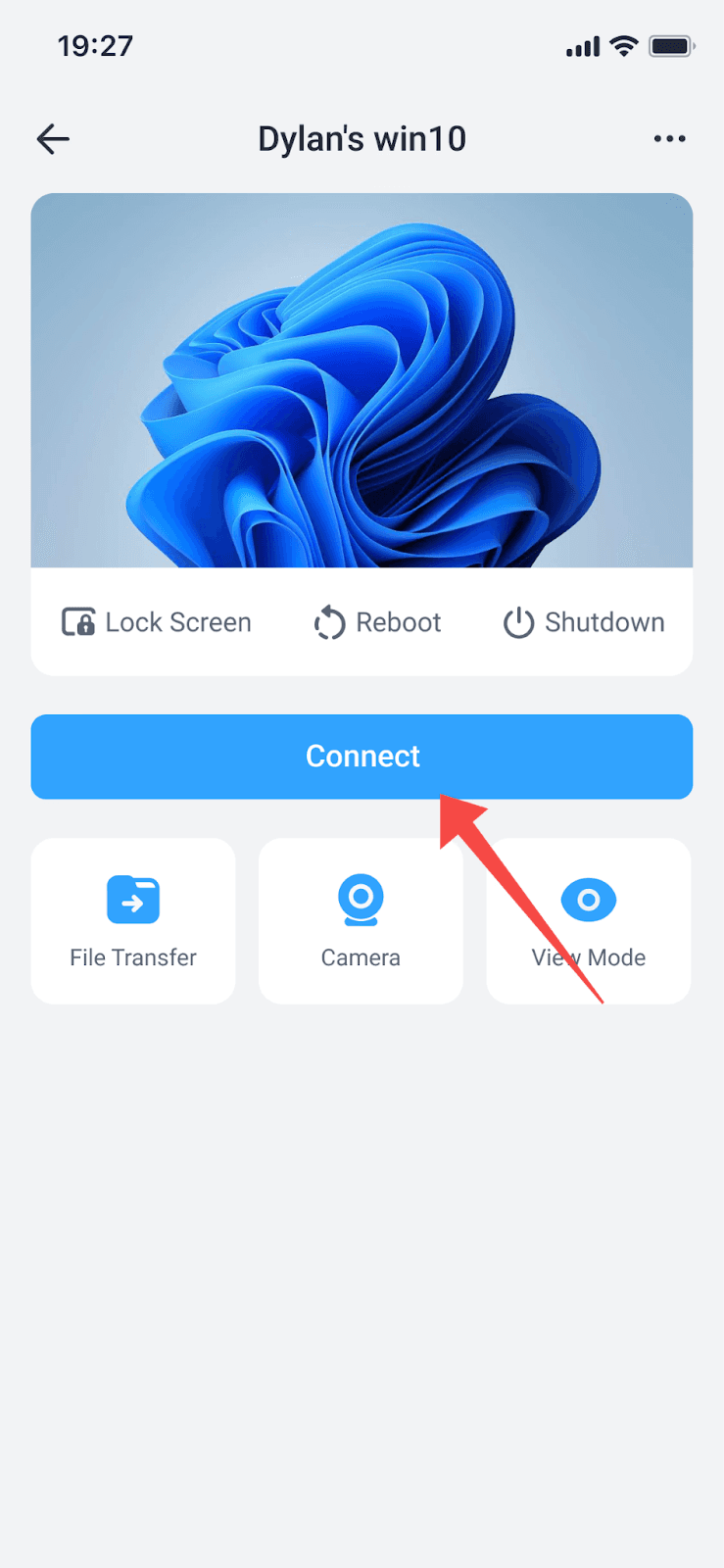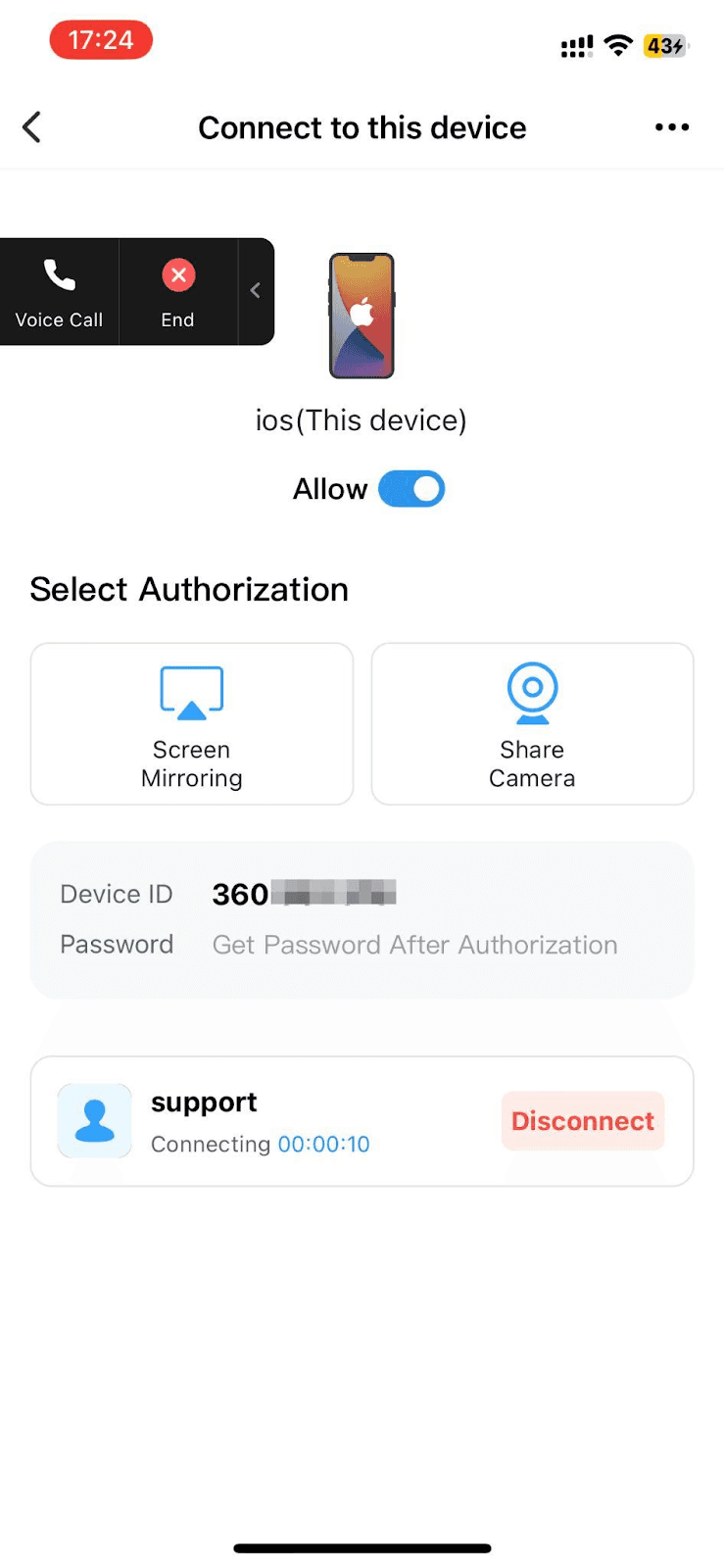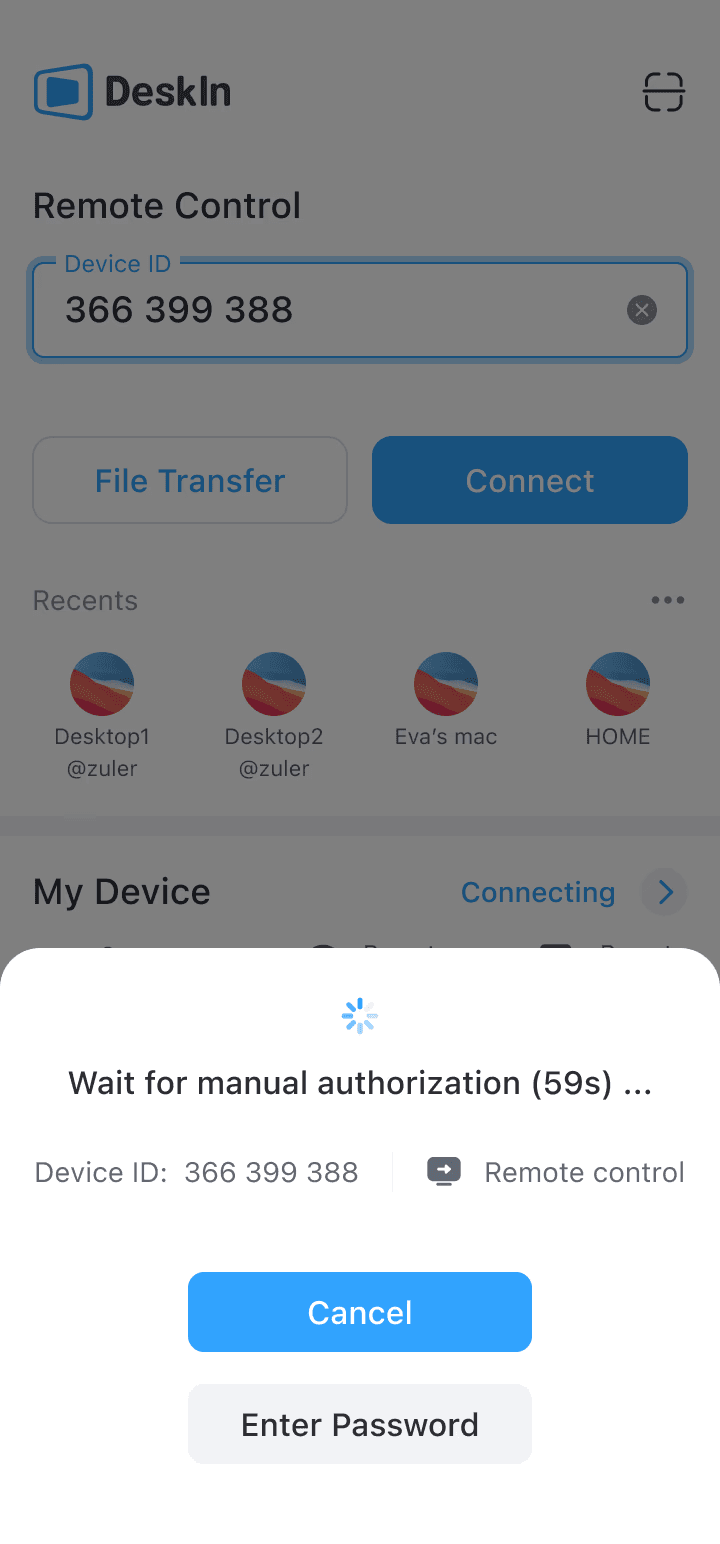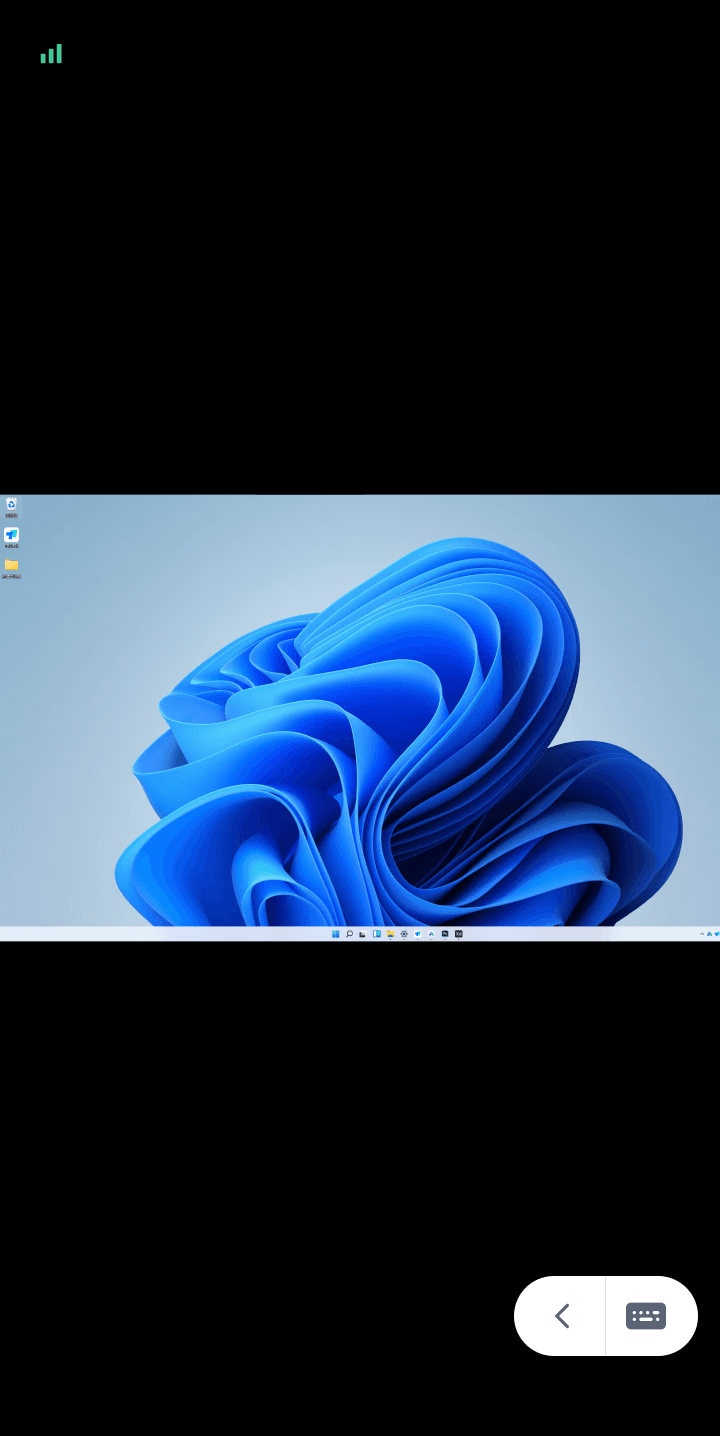Cách Kết Nối Từ Xa vào PC từ Mac trong 2 Cách [Hướng Dẫn Cập Nhật]
Trong môi trường làm việc từ xa hôm nay, bạn có thể thường xuyên cần sử dụng MacBook hoặc iMac của mình để kết nối từ xa vào máy tính Windows nhằm xử lý các công việc, truy cập tài nguyên, hoặc hỗ trợ người khác. Tuy nhiên, như bạn có thể đã thấy trên Reddit hoặc các diễn đàn khác, việc kết nối Mac với hệ thống Windows không phải lúc nào cũng suôn sẻ — bạn có thể gặp phải những thách thức với cấu hình mạng, tính tương thích và hiệu suất.
Nếu bạn đang tìm cách kết nối từ xa vào PC từ Mac, bài viết này sẽ chỉ cho bạn 2 giải pháp thực tiễn: sử dụng ứng dụng máy tính để bàn từ xa chính thức, Microsoft Remote Desktop (ứng dụng trên Windows), hoặc sử dụng công cụ bên thứ ba mạnh mẽ, DeskIn, để dễ dàng kích hoạt các kết nối từ xa cùng với những tính năng nâng cao. Tiếp tục đọc để tìm hiểu cách thiết lập và sử dụng những công cụ này để đạt được việc truy cập PC từ xa mượt mà từ Mac!
👀 Thêm điều thú vị để khám phá:
Phương Pháp Chính Thức: Truy Cập Windows từ Mac qua Ứng Dụng Windows
Một trong những cách tin cậy và chính thức nhất để kết nối từ xa vào một máy tính Windows từ Mac là sử dụng Microsoft Remote Desktop, hiện được gọi là Windows App trên macOS. Công cụ miễn phí này từ Microsoft cho phép truy cập từ xa an toàn từ MacBook hoặc iMac của bạn vào một máy tính Windows trên cùng một mạng thông qua VPN hoặc định tuyến internet.
Ứng dụng Windows hỗ trợ điều khiển chuột và bàn phím hoàn toàn, tối ưu hóa màn hình Retina, nhiều màn hình, chuyển tiếp âm thanh và video, và chia sẻ clipboard. Nó cũng cho phép chuyển hướng tệp cơ bản và truy cập vào môi trường doanh nghiệp như Dịch vụ Máy Tính Từ Xa, Windows 365, và Azure Virtual Desktop, biến nó thành một lựa chọn tuyệt vời cho các chuyên gia và đội ngũ hỗ trợ CNTT.
👀 Những Hạn Chế Khi Sử Dụng Ứng Dụng Windows:
Cần có phiên bản Windows Pro, Enterprise hoặc Education. Nó sẽ không hoạt động với Windows Home.
Cần cấu hình mạng (ví dụ: VPN hoặc chuyển tiếp cổng) để kết nối từ xa ngoài site.
Thiếu các tính năng nâng cao như chuyển tệp kéo và thả hoặc đánh thức từ xa.
Hiệu suất có thể biến động với các mạng không ổn định, đặc biệt nếu Mac vào chế độ ngủ.
Bạn có thể gặp phải sự gián đoạn phiên trong môi trường doanh nghiệp do các chính sách CNTT nghiêm ngặt.
Nếu các tính năng trên phù hợp với nhu cầu của bạn, và những hạn chế không làm bạn phiền lòng, hãy làm theo các bước dưới đây để bắt đầu. Để có hướng dẫn chi tiết từng bước, hãy xem hướng dẫn đầy đủ về sử dụng Microsoft Remote Desktop trên Mac:
Tải Microsoft Remote Desktop (hiện được gọi là Windows App) từ Mac App Store và mở ứng dụng.
Trên máy tính Windows của bạn, vào "Cài đặt > Hệ thống > Kết nối Từ xa" và bật truy cập từ xa.
Tìm tên PC của bạn trong "Cài đặt > Hệ thống > Giới thiệu", hoặc sử dụng "ipconfig" trong Command Prompt để lấy địa chỉ IP.
Tại ứng dụng Kết nối Từ xa trên Mac của bạn, nhấp vào "+ Thêm PC", và nhập tên PC hoặc IP, sau đó đăng nhập bằng thông tin xác thực Windows của bạn.
Điều chỉnh cài đặt hiển thị và âm thanh theo nhu cầu, sau đó nhấp "Kết nối" để bắt đầu phiên của bạn.

Cách Dễ Dàng: Truy Cập PC Từ Xa từ Mac Sử Dụng DeskIn
Mặc dù Ứng dụng Windows cung cấp một trải nghiệm máy tính để bàn từ xa vững chắc, một số người dùng Mac có thể thấy nó hạn chế về khả năng linh hoạt, hiệu suất hoặc dễ dàng thiết lập, đặc biệt là khi truy cập vào máy tính Windows bên ngoài mạng cục bộ hoặc cần nhiều hơn chỉ kiểm soát màn hình cơ bản.
Đây là lúc DeskIn xuất hiện như một giải pháp thân thiện với người dùng. Nó là một khách hàng máy tính để bàn từ xa đa nền tảng cho phép bạn điều khiển máy tính Windows của bạn từ MacBook hoặc iMac, bất cứ lúc nào, bất cứ đâu. Dù bạn đang làm việc tại nhà, đi du lịch, hay hỗ trợ một người bạn, nó cung cấp một kết nối mượt mà và an toàn với yêu cầu thiết lập thấp hơn đáng kể so với các công cụ từ xa truyền thống. Với giao diện trực quan và bộ tính năng nâng cao, nó là phần mềm từ xa miễn phí tốt nhất để truy cập tệp hoặc phần mềm, chuyển tệp, chơi game PC từ Mac, v.v.
👀 Những Tính Năng Chính của DeskIn cho Truy Cập Từ Mac đến Windows:
Tương thích đa nền tảng – Kết nối Mac của bạn với bất kỳ thiết bị Windows nào.
Phiên làm việc từ xa độ trễ thấp – Cung cấp các tính năng tối ưu hóa cho phản hồi đầu vào và hình ảnh mượt mà.
Chuyển tệp từ xa – Chuyển tệp giữa Mac và PC mà không có giới hạn kích thước/loại.
Phát trực tuyến 4K và FPS cao – Lên tới 4K/60FPS hoặc 2K/144FPS cho hình ảnh mượt mà.
Phản chiếu màn hình & màn hình ảo – Phản chiếu Windows lên Mac hoặc mở rộng màn hình.
Truy cập không giám sát & màn hình riêng tư – Đảm bảo truy cập an toàn vào máy tính Windows của bạn mà không cần tương tác của người dùng.
Giờ thì, hãy cùng kiểm tra các bước vận hành khi sử dụng DeskIn để truy cập PC từ xa từ Mac của bạn!
Bước 1. Tải xuống và cài đặt DeskIn cho cả Mac và máy tính Windows của bạn. Tạo một tài khoản DeskIn miễn phí bằng email của bạn và hoàn tất quy trình xác minh. Đăng nhập vào cùng một tài khoản trên cả Mac và máy tính Windows mục tiêu. Nhấp vào đây để tải xuống
Bước 2. Trên Mac của bạn, khởi động DeskIn, nhập ID thiết bị và mật khẩu hiển thị trên giao diện DeskIn trên PC của bạn, và nhấp vào nút "Kết nối" để bắt đầu phiên. Bạn sẽ ngay lập tức có thể tương tác với màn hình desktop Windows của bạn trong thời gian thực.

Bước 3. Trong khi kết nối, hãy khám phá các tính năng của DeskIn như chuyển tệp, chia sẻ màn hình, hỗ trợ gamepad, và điều khiển nhiều màn hình trực tiếp từ giao diện. Bạn cũng có thể bật hoặc tắt các tùy chọn như chế độ riêng tư hoặc chuyển đổi giữa chế độ điều khiển và chỉ quan sát khi cần.
Với DeskIn, không cần thiết lập VPN, cấu hình IP, hoặc lo lắng về các phiên bản Windows, biến nó thành một công cụ dễ tiếp cận cho người dùng hàng ngày và cả các chuyên gia.
Tại Sao Chọn DeskIn Hơn Microsoft Remote Desktop?
Sau khi khám phá cả hai công cụ, điều quan trọng là so sánh cách DeskIn và Microsoft Remote Desktop (ứng dụng Windows) hoạt động ở những lĩnh vực chính. Trong khi cả hai đều cho phép bạn đăng nhập vào máy tính Windows từ Mac, chúng khác biệt rõ ràng về khả năng sử dụng, tính tương thích, và các tính năng.
Dưới đây là so sánh giữa hai công cụ để giúp bạn chọn giải pháp tốt nhất dựa trên nhu cầu của bạn:
Tính Năng | DeskIn | Microsoft Remote Desktop (Windows App) |
|---|---|---|
Quá Trình Cài Đặt | Truy cập dựa trên đăng nhập đơn giản, không cần cấu hình mạng | Cần bật các cài đặt, nhập IP, và phiên bản Windows tương thích |
Các Nền Tảng Hỗ Trợ | Windows, macOS, iOS, Android | macOS đến Windows chỉ |
Hiển Thị & Hiệu Suất | Lên tới 4K 60FPS, nhiều màn hình, phát trực tuyến độ trễ thấp | Hiển thị tiêu chuẩn, ít tối ưu cho khả năng phản hồi theo thời gian thực |
Chuyển Tệp | Chuyển tệp tích hợp, hỗ trợ chuyển tốc độ cao giữa các nền tảng | Chuyển hướng tệp hạn chế |
Tính Năng Bảo Mật | Màn hình riêng tư, xác thực thiết bị, kiểm soát kết nối | Mã hóa cơ bản, phụ thuộc vào bảo vệ cấp hệ điều hành |
Chơi Game & Sử Dụng Sáng Tạo | Hỗ trợ chơi game từ xa, công cụ thiết kế, và phát âm thanh | Không tối ưu cho chơi game hay quy trình làm việc sáng tạo |
Giá | Miễn phí cho sử dụng thương mại (tối đa 3 thiết bị), có phiên bản cao cấp | Miễn phí, nhưng phụ thuộc vào phiên bản Windows |
Nếu bạn cần một công cụ đơn giản cho các công việc văn phòng nhẹ, Microsoft Remote Desktop sẽ hoàn thành nhiệm vụ. Nhưng đối với người dùng mạnh, game thủ, hoặc đội ngũ từ xa tìm kiếm sự linh hoạt và hiệu suất, DeskIn là một giải pháp hiện đại và đầy đủ tính năng hơn. Nhấp vào đây để tải xuống
Các Câu Hỏi Thường Gặp Về Cách Truy Cập Windows từ Mac
Q1: Tôi có cần phải ở trên cùng một mạng để truy cập từ xa một PC từ Mac không?
Với Ứng dụng Windows, bạn thường cần phải ở trên cùng một mạng cục bộ hoặc sử dụng VPN để mô phỏng môi trường đó; nếu không, kết nối có thể thất bại hoặc yêu cầu chuyển tiếp cổng, điều này không thân thiện với người mới bắt đầu.
DeskIn, ngược lại, sử dụng máy chủ trung gian dựa trên đám mây để cho phép kết nối qua mạng mặc định. Điều này làm cho nó tiện lợi hơn cho người dùng làm việc từ xa trên các địa điểm hoặc mạng khác nhau.
Q2: Tôi có thể chuyển tệp từ Mac đến PC của mình trong phiên làm việc từ xa không?
Ứng dụng Windows hỗ trợ chuyển hướng tệp cơ bản, nhưng chỉ từ các thư mục đã chỉ định trước và với khả năng xử lý tệp hạn chế. Nó phù hợp cho việc truy cập tệp nhẹ, không phải chuyển giao động.
DeskIn cung cấp một giao diện chuyển tệp chuyên dụng, cho phép chuyển tệp kéo-thả theo thời gian thực với tốc độ lên đến 12MB/s, bất kể định dạng tệp. Nó cũng hỗ trợ đồng bộ clipboard và chia sẻ thư mục cho những quy trình làm việc nâng cao hơn.
Q3: Tôi có thể sử dụng những ứng dụng này để chơi game PC từ Mac không?
Ứng dụng Windows không được thiết kế cho các tác vụ hiệu năng cao như chơi game. Độ trễ đầu vào, FPS giới hạn, và thiếu hỗ trợ tay cầm game khiến nó không thực tế cho nội dung tương tác.
DeskIn, tuy nhiên, cung cấp phát trực tuyến 60FPS, đầu vào độ trễ thấp, hỗ trợ tay cầm, và tùy chỉnh ánh xạ bàn phím/chuột. Mặc dù không phải là một nền tảng phát trực tuyến game đầy đủ, nhưng nó phù hợp cho trải nghiệm chơi game từ xa nhẹ nhàng hoặc yêu cầu vừa phải.
Kết Luận
Nếu bạn đang tìm kiếm một cách nhanh chóng và miễn phí để kết nối vào một máy tính Windows từ Mac, Microsoft Remote Desktop (Windows App) là một lựa chọn vững chắc, đặc biệt là cho người dùng doanh nghiệp có quyền truy cập vào phiên bản Windows đúng và thiết lập mạng hợp lý.
Tuy nhiên, nếu bạn cần một trải nghiệm máy tính để bàn từ xa đa năng hơn, đầy đủ tính năng hơn, và thân thiện với người dùng, DeskIn là sự lựa chọn nổi bật. Nó loại bỏ các rào cản kỹ thuật, hỗ trợ các trường hợp sử dụng đa dạng từ công việc đến giải trí, và bao gồm các công cụ mạnh mẽ như chuyển tệp, phản chiếu màn hình, và phát trực tuyến 4K, ngay cả trong phiên bản miễn phí của nó.
Cách Kết Nối Từ Xa vào PC từ Mac trong 2 Cách [Hướng Dẫn Cập Nhật]
Trong môi trường làm việc từ xa hôm nay, bạn có thể thường xuyên cần sử dụng MacBook hoặc iMac của mình để kết nối từ xa vào máy tính Windows nhằm xử lý các công việc, truy cập tài nguyên, hoặc hỗ trợ người khác. Tuy nhiên, như bạn có thể đã thấy trên Reddit hoặc các diễn đàn khác, việc kết nối Mac với hệ thống Windows không phải lúc nào cũng suôn sẻ — bạn có thể gặp phải những thách thức với cấu hình mạng, tính tương thích và hiệu suất.
Nếu bạn đang tìm cách kết nối từ xa vào PC từ Mac, bài viết này sẽ chỉ cho bạn 2 giải pháp thực tiễn: sử dụng ứng dụng máy tính để bàn từ xa chính thức, Microsoft Remote Desktop (ứng dụng trên Windows), hoặc sử dụng công cụ bên thứ ba mạnh mẽ, DeskIn, để dễ dàng kích hoạt các kết nối từ xa cùng với những tính năng nâng cao. Tiếp tục đọc để tìm hiểu cách thiết lập và sử dụng những công cụ này để đạt được việc truy cập PC từ xa mượt mà từ Mac!
👀 Thêm điều thú vị để khám phá:
Phương Pháp Chính Thức: Truy Cập Windows từ Mac qua Ứng Dụng Windows
Một trong những cách tin cậy và chính thức nhất để kết nối từ xa vào một máy tính Windows từ Mac là sử dụng Microsoft Remote Desktop, hiện được gọi là Windows App trên macOS. Công cụ miễn phí này từ Microsoft cho phép truy cập từ xa an toàn từ MacBook hoặc iMac của bạn vào một máy tính Windows trên cùng một mạng thông qua VPN hoặc định tuyến internet.
Ứng dụng Windows hỗ trợ điều khiển chuột và bàn phím hoàn toàn, tối ưu hóa màn hình Retina, nhiều màn hình, chuyển tiếp âm thanh và video, và chia sẻ clipboard. Nó cũng cho phép chuyển hướng tệp cơ bản và truy cập vào môi trường doanh nghiệp như Dịch vụ Máy Tính Từ Xa, Windows 365, và Azure Virtual Desktop, biến nó thành một lựa chọn tuyệt vời cho các chuyên gia và đội ngũ hỗ trợ CNTT.
👀 Những Hạn Chế Khi Sử Dụng Ứng Dụng Windows:
Cần có phiên bản Windows Pro, Enterprise hoặc Education. Nó sẽ không hoạt động với Windows Home.
Cần cấu hình mạng (ví dụ: VPN hoặc chuyển tiếp cổng) để kết nối từ xa ngoài site.
Thiếu các tính năng nâng cao như chuyển tệp kéo và thả hoặc đánh thức từ xa.
Hiệu suất có thể biến động với các mạng không ổn định, đặc biệt nếu Mac vào chế độ ngủ.
Bạn có thể gặp phải sự gián đoạn phiên trong môi trường doanh nghiệp do các chính sách CNTT nghiêm ngặt.
Nếu các tính năng trên phù hợp với nhu cầu của bạn, và những hạn chế không làm bạn phiền lòng, hãy làm theo các bước dưới đây để bắt đầu. Để có hướng dẫn chi tiết từng bước, hãy xem hướng dẫn đầy đủ về sử dụng Microsoft Remote Desktop trên Mac:
Tải Microsoft Remote Desktop (hiện được gọi là Windows App) từ Mac App Store và mở ứng dụng.
Trên máy tính Windows của bạn, vào "Cài đặt > Hệ thống > Kết nối Từ xa" và bật truy cập từ xa.
Tìm tên PC của bạn trong "Cài đặt > Hệ thống > Giới thiệu", hoặc sử dụng "ipconfig" trong Command Prompt để lấy địa chỉ IP.
Tại ứng dụng Kết nối Từ xa trên Mac của bạn, nhấp vào "+ Thêm PC", và nhập tên PC hoặc IP, sau đó đăng nhập bằng thông tin xác thực Windows của bạn.
Điều chỉnh cài đặt hiển thị và âm thanh theo nhu cầu, sau đó nhấp "Kết nối" để bắt đầu phiên của bạn.

Cách Dễ Dàng: Truy Cập PC Từ Xa từ Mac Sử Dụng DeskIn
Mặc dù Ứng dụng Windows cung cấp một trải nghiệm máy tính để bàn từ xa vững chắc, một số người dùng Mac có thể thấy nó hạn chế về khả năng linh hoạt, hiệu suất hoặc dễ dàng thiết lập, đặc biệt là khi truy cập vào máy tính Windows bên ngoài mạng cục bộ hoặc cần nhiều hơn chỉ kiểm soát màn hình cơ bản.
Đây là lúc DeskIn xuất hiện như một giải pháp thân thiện với người dùng. Nó là một khách hàng máy tính để bàn từ xa đa nền tảng cho phép bạn điều khiển máy tính Windows của bạn từ MacBook hoặc iMac, bất cứ lúc nào, bất cứ đâu. Dù bạn đang làm việc tại nhà, đi du lịch, hay hỗ trợ một người bạn, nó cung cấp một kết nối mượt mà và an toàn với yêu cầu thiết lập thấp hơn đáng kể so với các công cụ từ xa truyền thống. Với giao diện trực quan và bộ tính năng nâng cao, nó là phần mềm từ xa miễn phí tốt nhất để truy cập tệp hoặc phần mềm, chuyển tệp, chơi game PC từ Mac, v.v.
👀 Những Tính Năng Chính của DeskIn cho Truy Cập Từ Mac đến Windows:
Tương thích đa nền tảng – Kết nối Mac của bạn với bất kỳ thiết bị Windows nào.
Phiên làm việc từ xa độ trễ thấp – Cung cấp các tính năng tối ưu hóa cho phản hồi đầu vào và hình ảnh mượt mà.
Chuyển tệp từ xa – Chuyển tệp giữa Mac và PC mà không có giới hạn kích thước/loại.
Phát trực tuyến 4K và FPS cao – Lên tới 4K/60FPS hoặc 2K/144FPS cho hình ảnh mượt mà.
Phản chiếu màn hình & màn hình ảo – Phản chiếu Windows lên Mac hoặc mở rộng màn hình.
Truy cập không giám sát & màn hình riêng tư – Đảm bảo truy cập an toàn vào máy tính Windows của bạn mà không cần tương tác của người dùng.
Giờ thì, hãy cùng kiểm tra các bước vận hành khi sử dụng DeskIn để truy cập PC từ xa từ Mac của bạn!
Bước 1. Tải xuống và cài đặt DeskIn cho cả Mac và máy tính Windows của bạn. Tạo một tài khoản DeskIn miễn phí bằng email của bạn và hoàn tất quy trình xác minh. Đăng nhập vào cùng một tài khoản trên cả Mac và máy tính Windows mục tiêu. Nhấp vào đây để tải xuống
Bước 2. Trên Mac của bạn, khởi động DeskIn, nhập ID thiết bị và mật khẩu hiển thị trên giao diện DeskIn trên PC của bạn, và nhấp vào nút "Kết nối" để bắt đầu phiên. Bạn sẽ ngay lập tức có thể tương tác với màn hình desktop Windows của bạn trong thời gian thực.

Bước 3. Trong khi kết nối, hãy khám phá các tính năng của DeskIn như chuyển tệp, chia sẻ màn hình, hỗ trợ gamepad, và điều khiển nhiều màn hình trực tiếp từ giao diện. Bạn cũng có thể bật hoặc tắt các tùy chọn như chế độ riêng tư hoặc chuyển đổi giữa chế độ điều khiển và chỉ quan sát khi cần.
Với DeskIn, không cần thiết lập VPN, cấu hình IP, hoặc lo lắng về các phiên bản Windows, biến nó thành một công cụ dễ tiếp cận cho người dùng hàng ngày và cả các chuyên gia.
Tại Sao Chọn DeskIn Hơn Microsoft Remote Desktop?
Sau khi khám phá cả hai công cụ, điều quan trọng là so sánh cách DeskIn và Microsoft Remote Desktop (ứng dụng Windows) hoạt động ở những lĩnh vực chính. Trong khi cả hai đều cho phép bạn đăng nhập vào máy tính Windows từ Mac, chúng khác biệt rõ ràng về khả năng sử dụng, tính tương thích, và các tính năng.
Dưới đây là so sánh giữa hai công cụ để giúp bạn chọn giải pháp tốt nhất dựa trên nhu cầu của bạn:
Tính Năng | DeskIn | Microsoft Remote Desktop (Windows App) |
|---|---|---|
Quá Trình Cài Đặt | Truy cập dựa trên đăng nhập đơn giản, không cần cấu hình mạng | Cần bật các cài đặt, nhập IP, và phiên bản Windows tương thích |
Các Nền Tảng Hỗ Trợ | Windows, macOS, iOS, Android | macOS đến Windows chỉ |
Hiển Thị & Hiệu Suất | Lên tới 4K 60FPS, nhiều màn hình, phát trực tuyến độ trễ thấp | Hiển thị tiêu chuẩn, ít tối ưu cho khả năng phản hồi theo thời gian thực |
Chuyển Tệp | Chuyển tệp tích hợp, hỗ trợ chuyển tốc độ cao giữa các nền tảng | Chuyển hướng tệp hạn chế |
Tính Năng Bảo Mật | Màn hình riêng tư, xác thực thiết bị, kiểm soát kết nối | Mã hóa cơ bản, phụ thuộc vào bảo vệ cấp hệ điều hành |
Chơi Game & Sử Dụng Sáng Tạo | Hỗ trợ chơi game từ xa, công cụ thiết kế, và phát âm thanh | Không tối ưu cho chơi game hay quy trình làm việc sáng tạo |
Giá | Miễn phí cho sử dụng thương mại (tối đa 3 thiết bị), có phiên bản cao cấp | Miễn phí, nhưng phụ thuộc vào phiên bản Windows |
Nếu bạn cần một công cụ đơn giản cho các công việc văn phòng nhẹ, Microsoft Remote Desktop sẽ hoàn thành nhiệm vụ. Nhưng đối với người dùng mạnh, game thủ, hoặc đội ngũ từ xa tìm kiếm sự linh hoạt và hiệu suất, DeskIn là một giải pháp hiện đại và đầy đủ tính năng hơn. Nhấp vào đây để tải xuống
Các Câu Hỏi Thường Gặp Về Cách Truy Cập Windows từ Mac
Q1: Tôi có cần phải ở trên cùng một mạng để truy cập từ xa một PC từ Mac không?
Với Ứng dụng Windows, bạn thường cần phải ở trên cùng một mạng cục bộ hoặc sử dụng VPN để mô phỏng môi trường đó; nếu không, kết nối có thể thất bại hoặc yêu cầu chuyển tiếp cổng, điều này không thân thiện với người mới bắt đầu.
DeskIn, ngược lại, sử dụng máy chủ trung gian dựa trên đám mây để cho phép kết nối qua mạng mặc định. Điều này làm cho nó tiện lợi hơn cho người dùng làm việc từ xa trên các địa điểm hoặc mạng khác nhau.
Q2: Tôi có thể chuyển tệp từ Mac đến PC của mình trong phiên làm việc từ xa không?
Ứng dụng Windows hỗ trợ chuyển hướng tệp cơ bản, nhưng chỉ từ các thư mục đã chỉ định trước và với khả năng xử lý tệp hạn chế. Nó phù hợp cho việc truy cập tệp nhẹ, không phải chuyển giao động.
DeskIn cung cấp một giao diện chuyển tệp chuyên dụng, cho phép chuyển tệp kéo-thả theo thời gian thực với tốc độ lên đến 12MB/s, bất kể định dạng tệp. Nó cũng hỗ trợ đồng bộ clipboard và chia sẻ thư mục cho những quy trình làm việc nâng cao hơn.
Q3: Tôi có thể sử dụng những ứng dụng này để chơi game PC từ Mac không?
Ứng dụng Windows không được thiết kế cho các tác vụ hiệu năng cao như chơi game. Độ trễ đầu vào, FPS giới hạn, và thiếu hỗ trợ tay cầm game khiến nó không thực tế cho nội dung tương tác.
DeskIn, tuy nhiên, cung cấp phát trực tuyến 60FPS, đầu vào độ trễ thấp, hỗ trợ tay cầm, và tùy chỉnh ánh xạ bàn phím/chuột. Mặc dù không phải là một nền tảng phát trực tuyến game đầy đủ, nhưng nó phù hợp cho trải nghiệm chơi game từ xa nhẹ nhàng hoặc yêu cầu vừa phải.
Kết Luận
Nếu bạn đang tìm kiếm một cách nhanh chóng và miễn phí để kết nối vào một máy tính Windows từ Mac, Microsoft Remote Desktop (Windows App) là một lựa chọn vững chắc, đặc biệt là cho người dùng doanh nghiệp có quyền truy cập vào phiên bản Windows đúng và thiết lập mạng hợp lý.
Tuy nhiên, nếu bạn cần một trải nghiệm máy tính để bàn từ xa đa năng hơn, đầy đủ tính năng hơn, và thân thiện với người dùng, DeskIn là sự lựa chọn nổi bật. Nó loại bỏ các rào cản kỹ thuật, hỗ trợ các trường hợp sử dụng đa dạng từ công việc đến giải trí, và bao gồm các công cụ mạnh mẽ như chuyển tệp, phản chiếu màn hình, và phát trực tuyến 4K, ngay cả trong phiên bản miễn phí của nó.

Play x Work
All at Once
DeskIn Remote Game
only $14.32 USD 🎉 Limited on July 16-31
Add promo code: deskinsummer1






